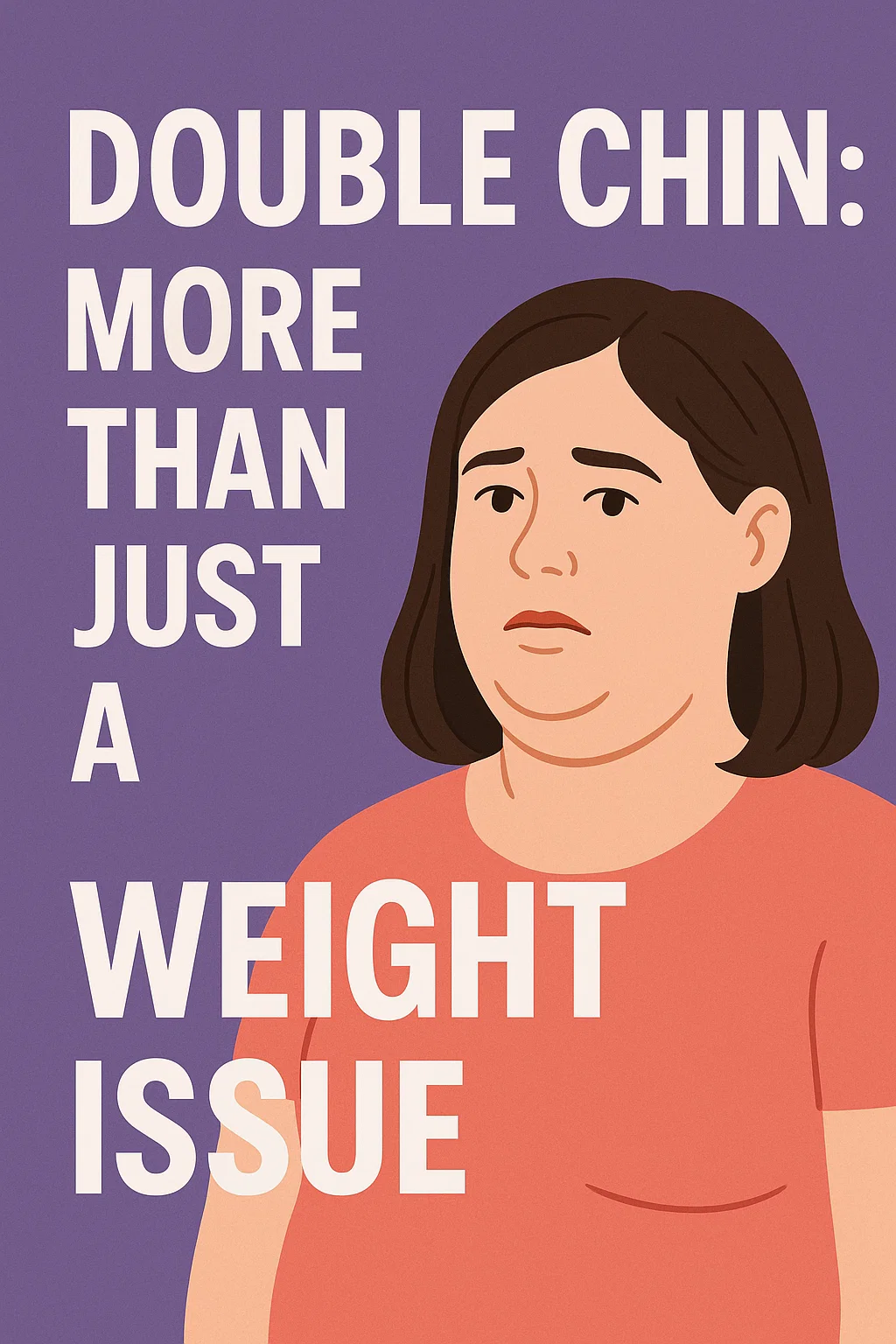Double Chin: More Than Just a Weight Issue
2025-09-25
Many people notice that subtle double chin when looking in the mirror. While often seen as a sign of being overweight, the formation of a double chin is actually far more complex. Genetics, age, posture, and even hereditary factors can all play important roles in its development. Understanding these factors is key to finding the most suitable strategies to address it.
Why Do Double Chins Form?
Genetic factors play a crucial role in the formation of double chins. Some people are naturally born with less defined jawlines or poorer skin elasticity, making them more prone to double chins even at normal weights. Genetics determine our tendency for fat distribution, including in the facial and jaw areas.
Aging is another significant factor. As we age, the gradual loss of collagen and elastin in the skin causes it to become looser, and the jawline becomes less defined. Simultaneously, the platysma muscle (which extends from the chin to the collarbone) also slackens with age, further accentuating the appearance of a double chin.
Postural habits significantly contribute to double chin formation. Long-term "tech neck" posture—looking down at phones or computers—can lead to relaxed neck muscles and fat accumulation in this area. One study found that people who spend an average of 2-4 hours daily looking down at their phones are more likely to develop double chins and neck skin laxity.
Of course, weight gain does exacerbate double chins. When overall body fat increases, the face and jaw areas also accumulate more fat cells. However, interestingly, even successful weight loss doesn't necessarily eliminate double chins completely, as the skin may have already lost its original elasticity.
Strategies: From Lifestyle Changes to Professional Interventions
Improving posture is the simplest and most effective starting point. Keep your head aligned with your spine and avoid looking down for extended periods. Adjust the height of your computer screen at work and hold your phone at eye level—these small changes can reduce pressure on the neck.
Targeted exercises can help strengthen neck muscles. Some simple and practical exercises include:
- Neck rotations: Slowly turn your head to one side, hold for a few seconds, then switch sides.
- Chin lifts: Tilt your head back to look at the ceiling, purse your lips as if kissing the ceiling, and feel the stretch in the front of your neck.
- Jawline exercises: Press your tongue against the roof of your mouth, then slowly open and close your mouth.
Weight management remains important for reducing double chins. Maintaining a healthy weight through a balanced diet and regular exercise can reduce fat accumulation in the face and neck. Foods rich in collagen, such as bone broth, fish, and leafy greens, may help improve skin elasticity.
Professional treatment options include:
- Non-invasive treatments: Radiofrequency, ultrasound therapy, and other methods can stimulate collagen regeneration and tighten the skin.
- Injection therapies: Fat-dissolving injectables like Kybella can directly target submental fat.
- Surgical treatments: Jawline liposuction or neck lift surgery can provide more significant and lasting results.
Acceptance and Self-Confidence
It's important to recognize that double chins are a normal physical feature, and many people have them. While pursuing changes, it's also essential to learn to accept your body. Standards of beauty vary widely, and confidence is often the best accessory.
Regardless of the approach chosen to address a double chin, remember that the goal should be health and self-confidence, not conforming to unrealistic aesthetic standards. Before pursuing any professional treatment, be sure to consult qualified medical professionals to understand all options and potential risks.
Ultimately, a double chin is just one part of our unique appearance—it does not define our worth or beauty. Embracing what makes you unique is what matters most.
